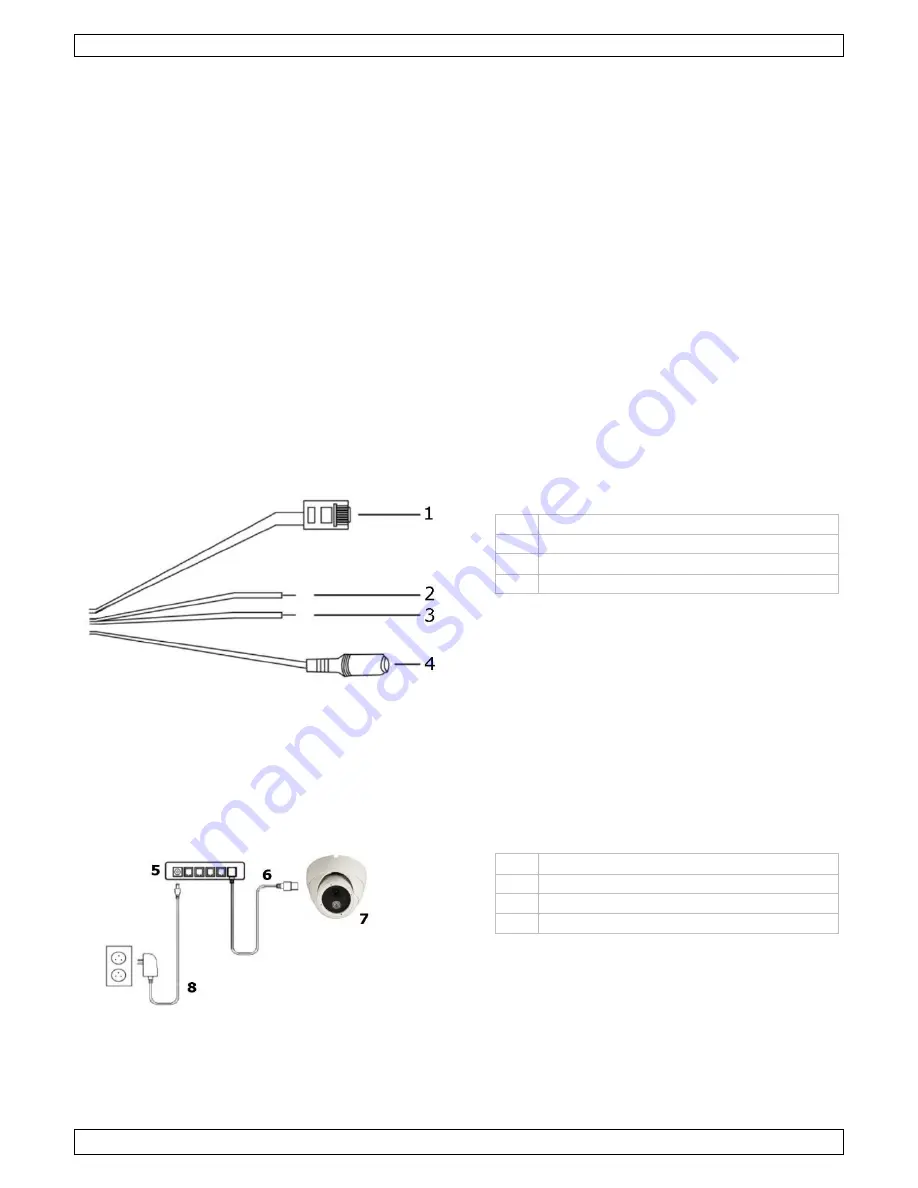
CAMIP20
V. 01 – 15/07/2014
4
©Velleman nv
5.
Installation: Hardware
Refer to the illustrations on page
2
of this manual.
1.
Choose a location for the camera, keeping following guidelines in mind:
o
do not install the camera in locations where extremely high or low temperatures or
excessive vibrations may occur.
o
avoid mounting the camera near high electro-magnetic fields.
o
do not aim the camera at the sun or other extremely bright objects or reflections (e.g.
metal doors).
2.
Loosen the socket head screw
[e]
using the appropriate hex key (not incl.).
3.
Hold the mounting plate
[a]
and unscrew the fixation ring
[b]
by turning it counter-
clockwise. Note that the lens enclosure
[d]
and positioning ring
[c]
are also released.
4.
Use the mounting plate
[a]
to determine the position of the mounting holes. Drill the holes.
5.
Guide the cables
[g]
through one of the cable slots
[f]
and fix the mounting plate
[a]
on
the ceiling or wall with four screws.
6.
Insert the lens enclosure
[d]
in the positioning ring
[c]
and slide the fixation ring
[b]
over
both. Point the camera towards the desired field of observation and screw the fixation
ring
[b]
back on the mounting plate
[a]
.
7.
Fasten the socket head screw
[e]
using the appropriate hex key (not incl.).
8.
Connect the camera. Refer to chapter
6. Installation: Power Supply and PoE
.
6.
Installation: Power Supply and PoE
Power Supply
1
8P8C network cable
2
RESET
3
GND
4
power cable
For your camera to work properly, you need to connect the camera cables as follows:
1.
Connect the network cable
[1]
to your network.
2.
Plug the camera’s power cable
[4]
in a suitable power adapter (12 VDC 1 A, for example
PSSE1210, not incl.) and connect it to a power socket.
PoE (Power over Ethernet) Connection
The camera features PoE (Power over Ethernet). If your router or hub supports PoE, you do not need to
connect the camera to a power socket. You can then connect the camera as shown below:
5
PoE router/hub
6
LAN cable
7
camera
8
power
1.
Use a network cable
[6]
to connect your camera
[7]
to a PoE port of your router
[5]
.
2.
Make sure your router is connected to a power socket
[8]
.
Note:
If your router does not support PoE, you can use a PoE injector (not included) to use the PoE
feature.





































